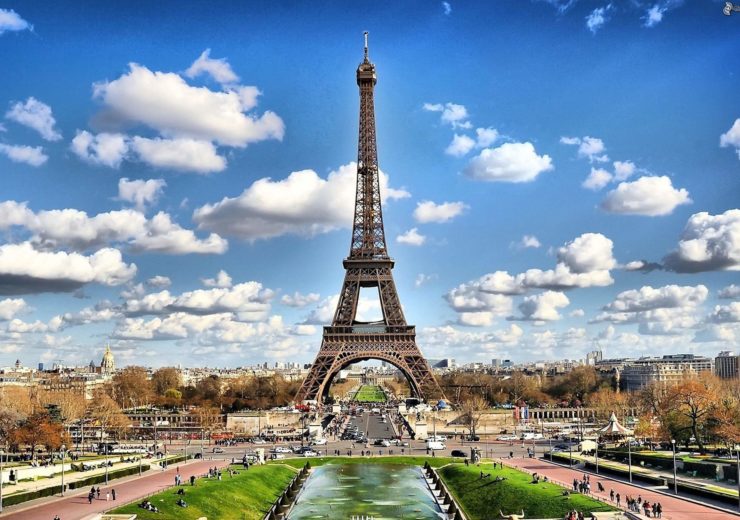With talks in Bangkok set to commence on 4 September, the 196 members of the Paris Agreement will solidify their commitment to reducing greenhouse gas emissions, halting rising temperatures and aiding the countries most affected by climate change

Back in 2015, almost 200 nations set out a mission to combat global warming – but what is the Paris Agreement and how will it achieve its goals?
Within its huge scope, the international pact aims to reduce greenhouse gas emissions and cap the rise in global temperature at “well below” 2C above pre-industrial levels, with less than 1.5C being the ideal scenario.
The collective economic might of the treaty’s participants, which include France, China, India, Germany, Brazil and the UK, also promises to provide $100bn (£77.7bn) annually to poorer nations harassed by floods, heatwaves and rising seas.
While the US is currently a member, after November 2019 it could no longer be, after the Donald Trump administration delivered an official notice to the United Nations (UN) that it intends to withdraw from the international commitment.
The end of this year marks the deadline for finalising the goals of the Paris Agreement.
With this in mind, key climate change talks will take place in Bangkok tomorrow (4 September), with the 196 countries set to solidify their commitment.
Here, we breakdown exactly what the Paris Agreement is, the issues it plans to face and which countries plan to see it through to fruition.
What is the Paris Agreement? What it involves and how it started
The Paris Agreement (Accord de Paris in French) is a global commitment to mitigating greenhouse gas emissions, limiting rising temperatures and financing poorer countries most affected by the consequences of climate change.
It was signed in 2015 by representatives from 196 countries at the 21st Conference of the Parties of the United Nations Framework Convention on Climate Change (UNFCCC) in Le Bourget, near the French capital.

The UNFCCC is its spiritual predecessor, being an international environmental treaty signed in 1992 by many of the same countries dedicated to achieving many of the same goals.
The Paris Agreement, the objectives of which will begin in earnest in 2020, holds its participants to a higher standard of climate change mitigation who, upon signing it, tacitly confirm their intention to improve upon previously set targets.
It serves as a global hub for tracking the collective effort to combat rising temperatures, with each member required to take action against climate change in their own country and regularly report their progress.
Every five years, the treaty will be reviewed and new contingencies geared towards cutting emissions will be introduced according to its success rate.
What is the Paris Agreement? Key participants and US withdrawal
Of all the countries which have signed the Paris Agreement, China emits the most greenhouse gas emissions, contributing more than an estimated 20% to global levels.
To compensate for this, it has set a number of goals under the treaty which involve lowering carbon dioxide emissions per unit of GDP by between 60% and 65% from 2005 levels, introducing 20% more non-fossil fuel sources to its energy system and increase the size of its forests by about 4.5 billion cubic metres from 13 years ago.
The US is second on the list in terms of greenhouse gas emissions contribution, but in August 2017 the country announced its intention to withdraw from the treaty as soon as it is eligible to do so.
The withdrawal system stipulates that a member cannot exit the Paris Agreement until three years after the date it signed, meaning the earliest possible notice for withdrawal from the US would be November 2019 with an as yet unknown amount of time to follow that before it is no longer a member.

No other treaty member emits more than 5% of global greenhouse gas emissions, with India third on the list (4.1%), Japan fourth (3.8%) and Germany fifth (2.6%).
The UK is tenth, contributing 1.6%, with potential targets reportedly including cutting emissions to net zero by 2050, an improvement on its existing ambition to reduce its greenhouse gas levels by 80% by the same date.
At 5%, Russia is the largest contributor to global greenhouse gas emissions levels to not have signed the Paris Agreement, joining countries such as Turkey, Iran and Columbia on the sidelines.
What is the Paris Agreement? Criticisms
As of last year, various studies have found that the sum of all the member pledges under the Paris Agreement would not be enough to meet its goal of keeping the rise in global temperatures to “well below” 2C.
Moreover, some observers have criticised the $100bn (£77.7bn) fund for poorer nations as insufficient when compared with other international priorities of rich countries, arguing that that number accounts for just 8% of annual worldwide military spending.
Others, including former NASA scientist James Hansen, have posited that the treaty involves too many promises and not enough concrete contingencies for actual action.


